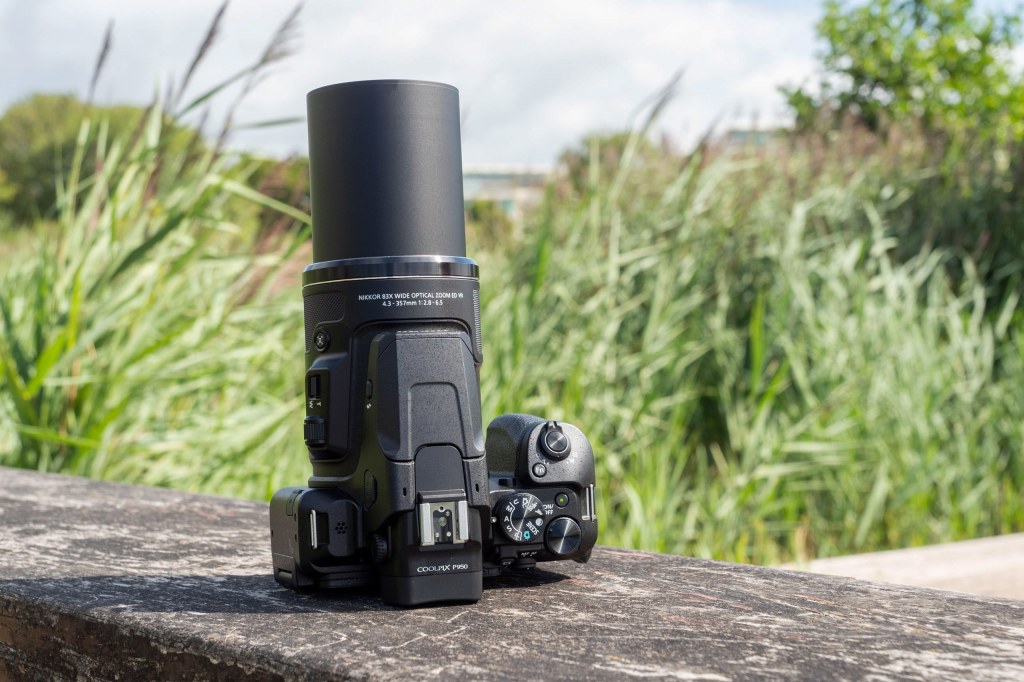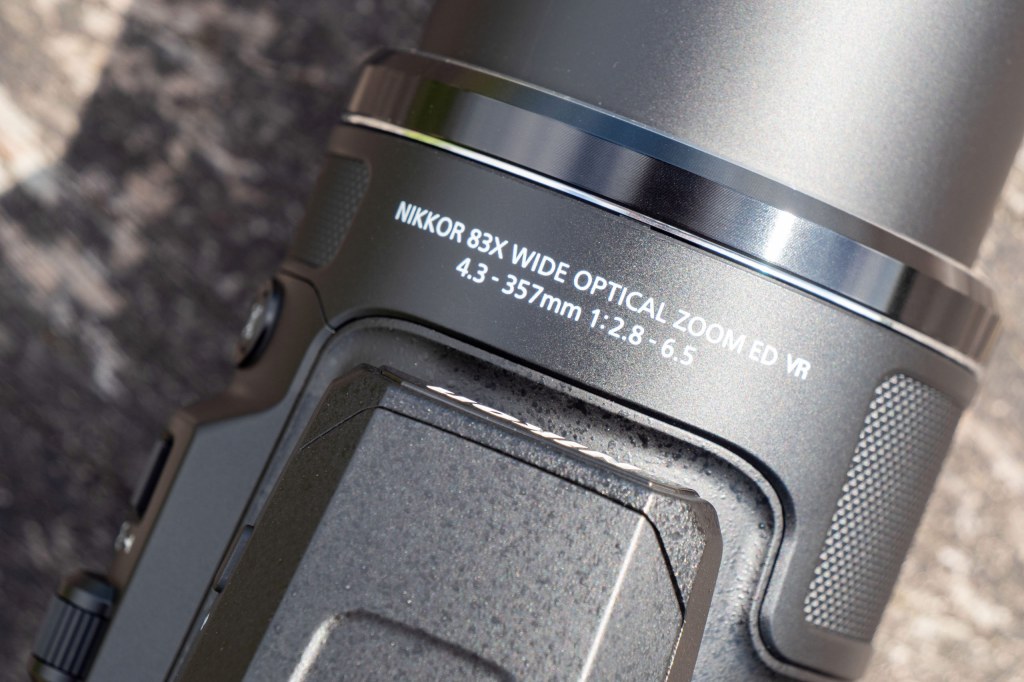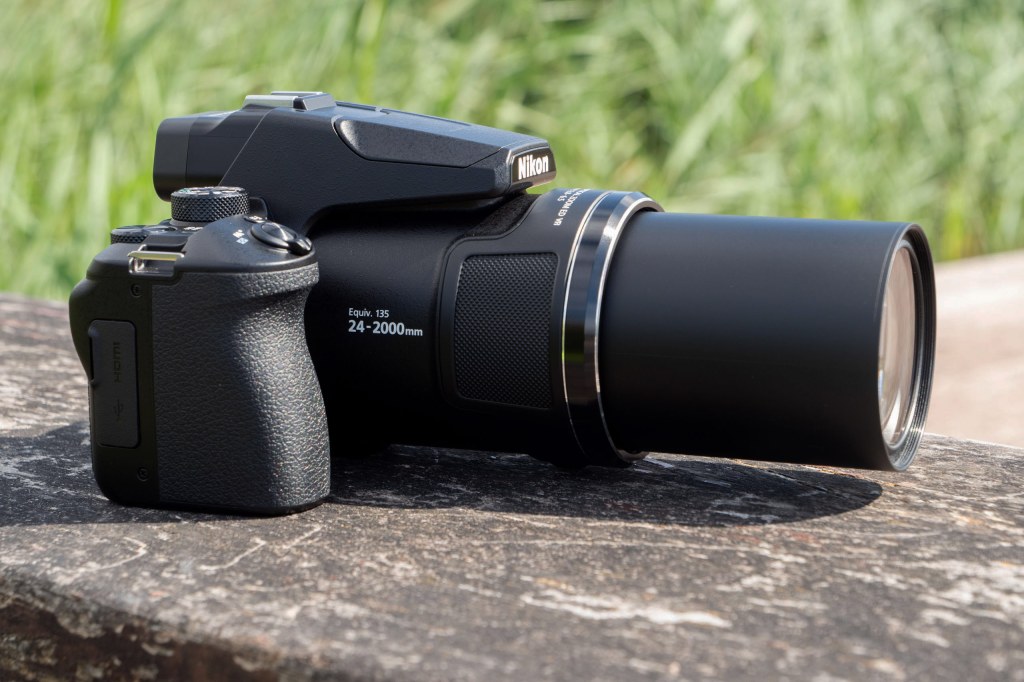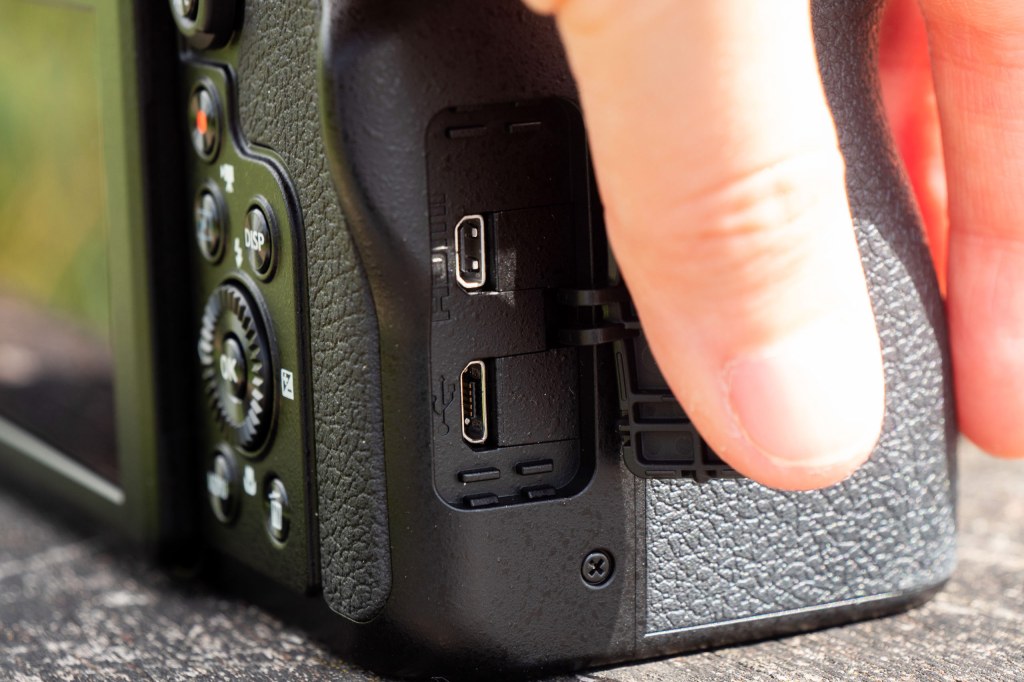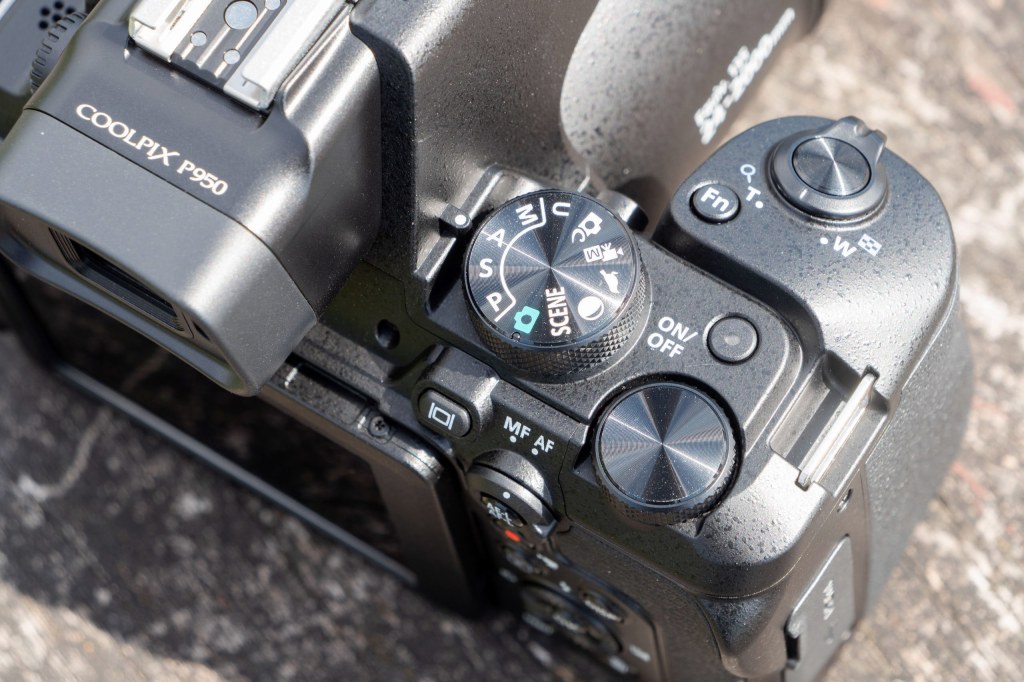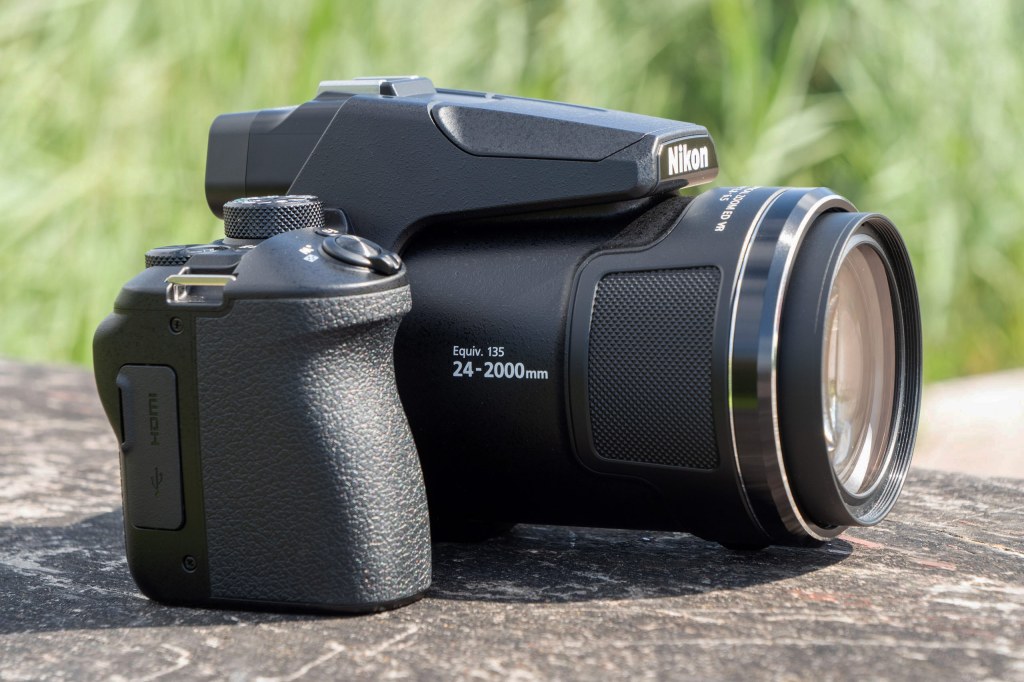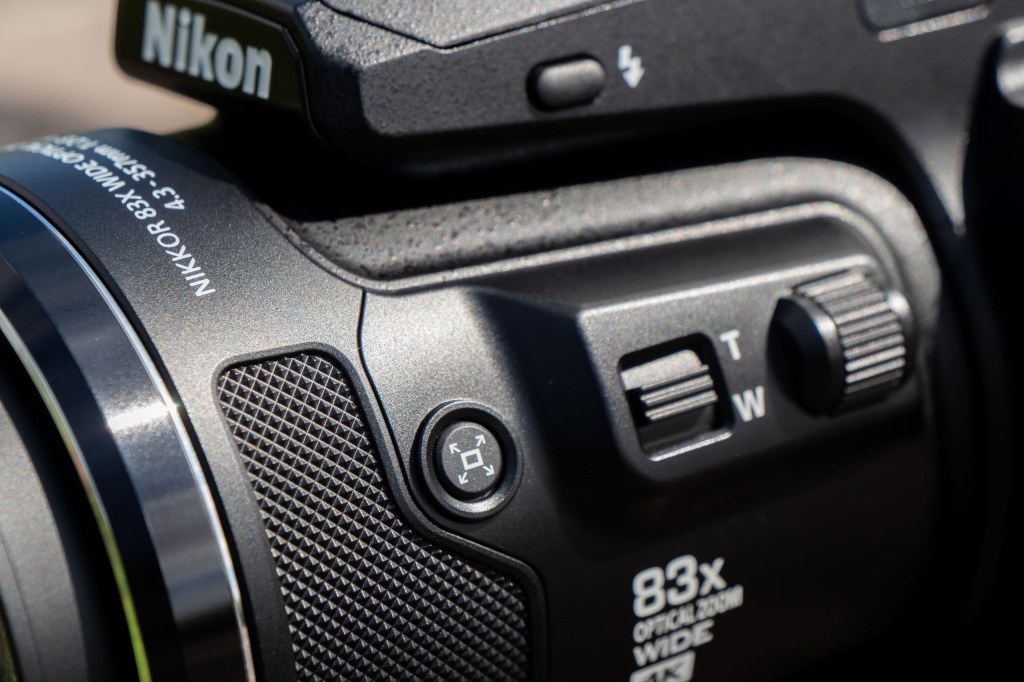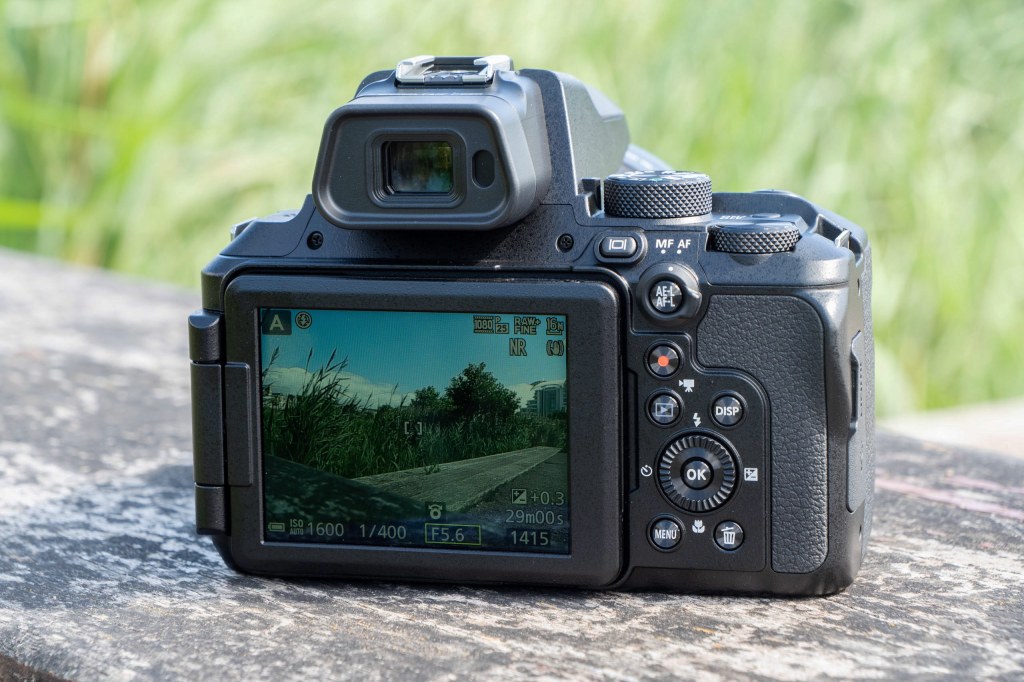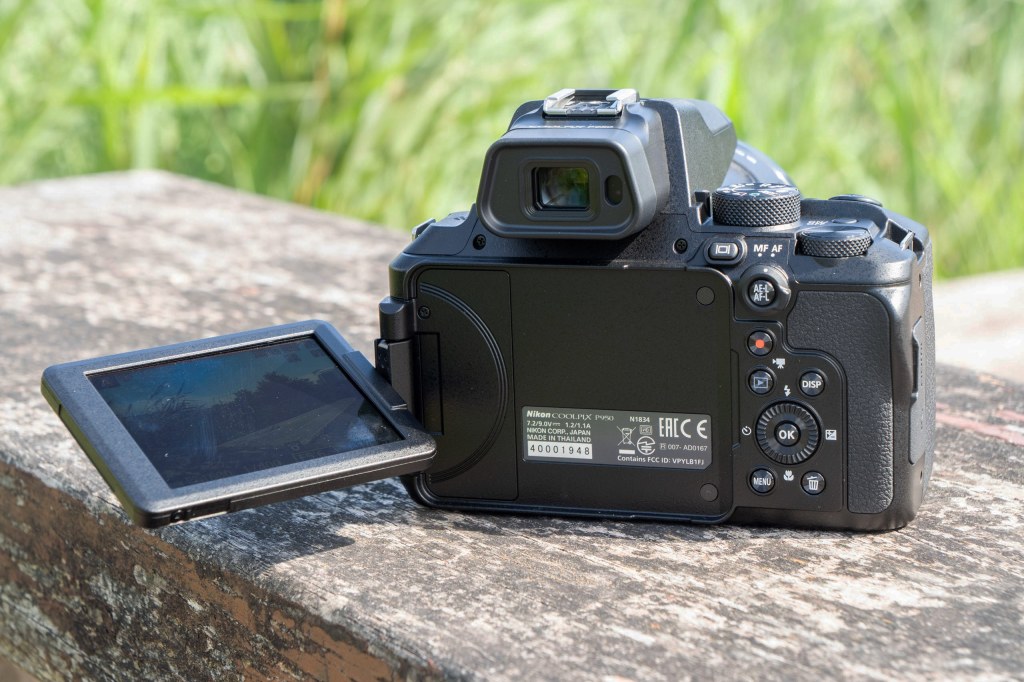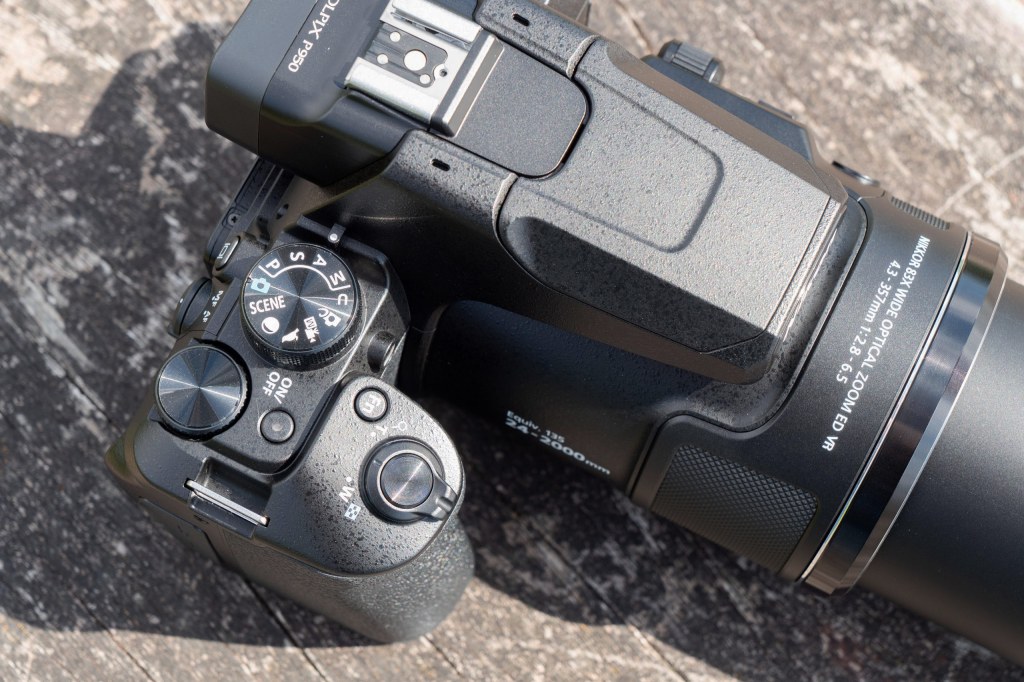Amateur Photographer verdict
If you need a super zoom, then the Nikon Coolpix P950 bridge camera is a sensible option. It’s not cheap, but with better performance than low-cost alternatives, you might just get what you pay for- 83x zoom
- Fully articulating screen
- Decent electronic viewfinder
- High price
- Screen not touch-sensitive
At a glance:
- Price as reviewed: $800 / £849
- 16MP 1/2.3-inch CMOS sensor
- 24-2000mm equivalent f/2.8-6.5 lens (83x optical zoom)
- Micro USB in-camera charging
- 4K/30p video recording
- 3.2-inch, 921k-dot vari-angle TFT LCD
- 0.39-inch OLED EVF 2360k-dots
The Nikon Coolpix P950 was first announced in January 2020, sitting below the Nikon Coolpix P1000 in Nikon’s range of bridge cameras. Although it’s now four years old, it still hasn’t been replaced, and still features a good range of specifications for those interested in this type of camera.
At its price point ($800/£849), it sits firmly in “premium” territory, easily making it onto our list of best ultra zoom camera you can buy.
Bridge cameras are a bit of an anomaly in the modern camera market. They have sensors which are usually smaller than even those found in most smartphones these days, but, they give you the form and functionality of a more-advanced DSLR or mirrorless camera. They also boast huge zooms which get you much closer to your subject – optically at least – than any smartphone currently will.
For that reason, these cameras are often popular among wildlife and travel photographers, who want to be able to cover off a large number of subjects without packing a host of different lenses. And although not cheap, it’s certainly a lot cheaper than investing in one of the best mirrorless cameras and accompanying set of mirrorless lenses, too.
Despite there being very few launches in recent years, there’s still a fair amount of competition in the bridge camera market. As well as some very low-cost options, there’s also still some premium models with one-inch sensors available to buy, but those tend to come at the expense of having a very long zoom.
Nikon Coolpix P950 – Features
With its 83x zoom, the P950 is one of the longest zooms on the market, beaten only by its sister camera, the P1000 which has a ridiculous 100x zoom. The 83x zoom gives you a 35mm equivalent of 24-2000mm – just imagine the mirrorless/DSLR lenses you’d need to buy to cover that range. This is what compensates for the fact that the 16.1MP 1/2.3-inch sensor is pretty small by modern standards. In fact, many high-end smartphones have much bigger sensors.
At the wide end of the zoom lens, you get f/2.8 aperture, but this drops quite quickly on zooming, reaching f/6.5 by the time you get to the full 2000mm extension. As well as the optical zoom, you can also digitally zoom further – up to a maximum of 8000mm equivalent. I’d question the need to get closer than 2000mm in almost every circumstance, especially if it comes via cropping to get lower image quality.
Video recording tops out at 4K, 30fps, which should be fine for most users who might just want to record the odd clip or two. The fact that the screen can face forward might also make it a reasonable choice for those who want to present to camera. It’s worth noting that as an older camera, this has a 29 minute video recording limit.
The P950 charges in-camera, but again, as an older camera it has Micro USB connectivity, rather than the now-mandatory USB-C format. A charger is supplied in the box, though.
Other useful features worth mentioning include built-in Wi-Fi and Bluetooth for transferring your shots across to your smartphone, a 3.5mm jack for attaching an external microphone, and the ability to record in raw format.
Nikon Coolpix P950 – Build and Handling
If you’re looking for something that handles like a “real” camera, then you’ll certainly get this from the P950.
It’s sized and shaped like a chunky DSLR or mirrorless camera, with the big lens – even when fully retracted – giving it a decent amount of heft, too. With the lens fully extended it looks a little on the ridiculous side, but again, probably so would something of equivalent focal length from a regular camera too.
The grip itself is textured and nicely shaped. Buttons are all grouped on the right hand side of the camera, so you don’t need to use your left hand for changing any setting if you don’t want to. In other ways it’s similar to a DSLR/Mirrorless to, with a mode dial for choosing between shooting modes (PASM and automatic/scene modes), as well as a rear dial that can be used for adjusting shutter speed. To change aperture you’ll need to use the dial on the back of the camera around the OK button.
You can use a rocker switch around the shutter button to zoom the lens in and out, but an alternative is to use a switch on the left hand side of the lens. This can be quickly accessed when steadying the lens with your left hand and is quite intuitive to use. Also found here is another scrolling dial, which you can use to adjust a number of different parameters that you can assign via the main menu, such as exposure compensation, ISO or aperture.
Another useful button on the lens itself is the “snap-back zoom” button. Hold this down when the lens is extended and the lens will retract to allow you to find any subject that may have wandered out of frame. Release it again and the lens will go back to its zoom position.
Nikon Coolpix P950 – Viewfinder and Screen
By more modern standards, the screen for the P950 is a little disappointing. It’s relatively low resolution at 920k-dots, but it’s still more than adequate for composing your images and viewing them back to check them.
It’s a shame it’s not a touch sensitive screen, as this might make some aspects of operation quicker / easier, but with a good degree of buttons around the body this isn’t a huge drawback.
On a more positive note, the fact that the screen fully articulates makes it helpful for composing from odd angles, including selfies and filming to camera. It’s also good to be able to fold the screen away when not in use to protect it from any damage.

As for the viewfinder, I found this to actually be pretty good, even with huge advances in viewfinder specs in the intervening time since the P950’s release. At 2360k-dot it’s reasonably detailed and you should find you can compose very well within it, as well as quickly check images in playback and even scroll through menus if you feel so inclined.

I also like the fact that the viewfinder has a sensor so it switches on and off automatically as you raise the camera to your eye. That’s not always the case with some cheaper bridge cameras, such as the Panasonic Lumix FZ82D, so it makes for a smooth user experience.
Nikon Coolpix P950 – Image Quality and Performance
The point of very high-zoom cameras is not to give you the best-possible image quality, but rather, to give you the flexibility to capture images in scenarios that would otherwise be impossible.
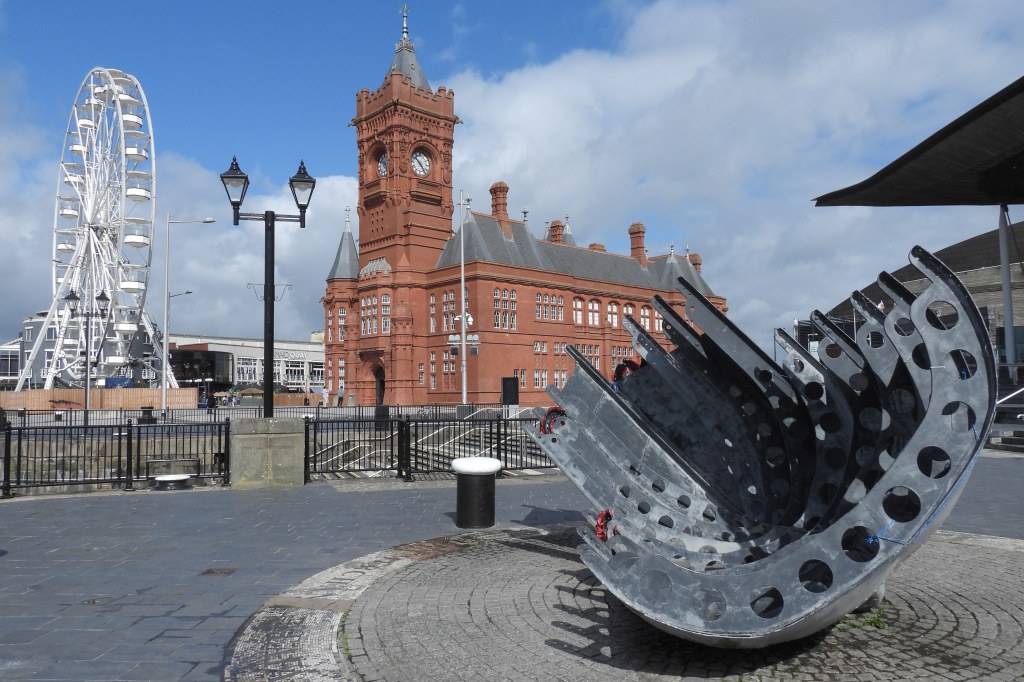
In this case, if we look at images taken at the wide angle end of the zoom lens, then what we’ve got is good, but only about as good as what you might get from a mid-range smartphone and upwards. Colours are nicely saturated, while there’s a reasonable amount of detail.

Overall, the lens also puts in a pretty good performance compared to some others on the market. For example, there’s no major problems with lens flare or chromatic aberration.
What the P950 absolutely does that no smartphone can currently do is optically zoom to a great degree, with even high-end flagship smartphones topping out at 10x zoom lenses, often in front of very small sensors.
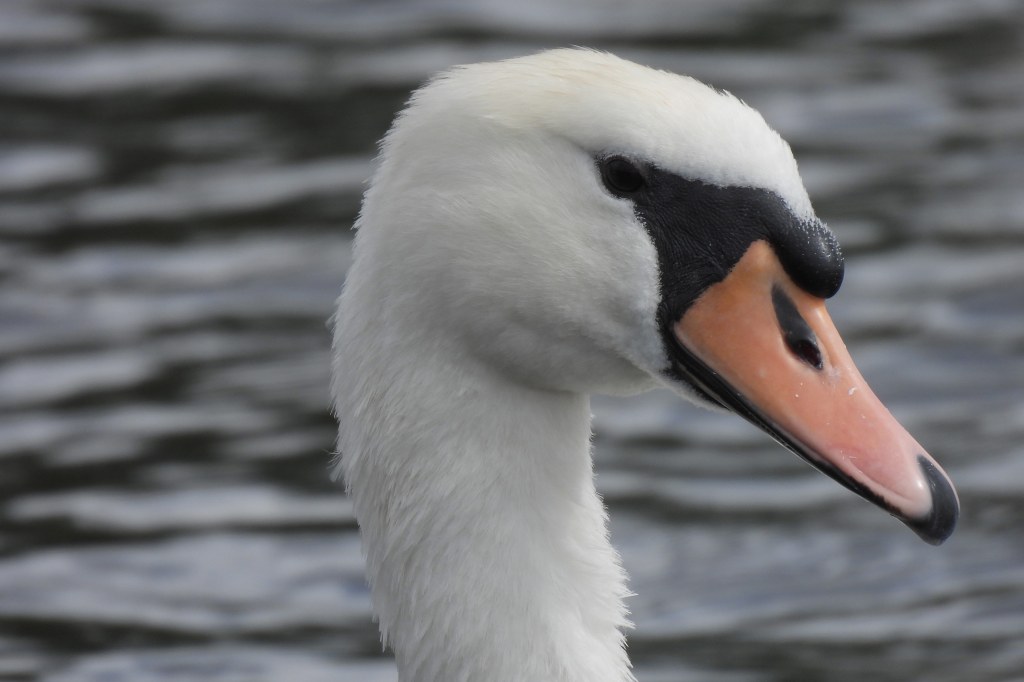
While you may not get the sharpest images you’ve ever seen from the P950, at longer focal lengths the results are actually pretty good, and allow you to get closer to your subjects. Wildlife photographers in particular are likely to be keen if they don’t otherwise want to invest thousands in very long lenses to go with a system camera.
You will need a bit of patience to get the best results however. Although the lens has OIS, when you’re shooting at 1000-2000mm equivalents, you will need a very steady hand to ensure that whatever you’re shooting remains in the frame. You might also find that even slight subject movements sees your composition alter quite dramatically.
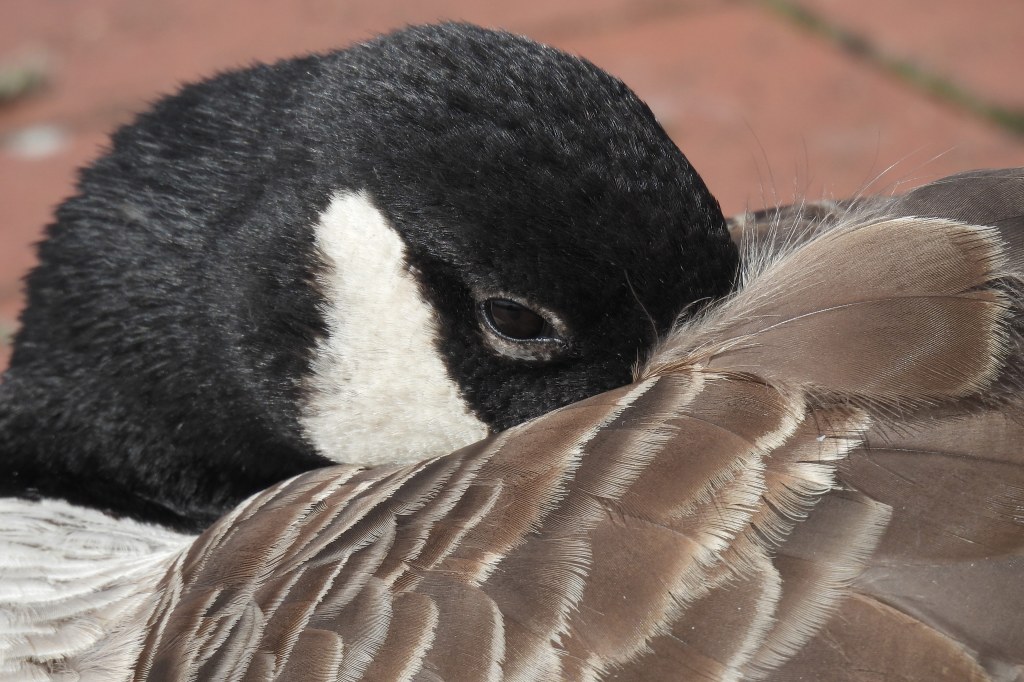
The focusing isn’t super fast, but it’s not too bad. If the subject you’re photographing moves in a reasonably predictably fashion, or stays still for a couple of seconds at a time, you should find you can get some nice shots that the AF can just about keep up with.
Macro mode works quite well. A subject can be almost touching the lens and it will still focus, so if you like to get frame-filling close-ups, it could be a good choice.
As I would expect, low light shooting is not the P950’s forte. You’ll likely find you get quite noisy and smudgy images, so if that’s something you think you’ll do a lot of this is probably not the camera for you. However, for most travel and nature photographers, it’s likely not to be too much of a problem.
Nikon Coolpix P950 – Value for Money
This is by no means a cheap bridge camera, coming in at quite a pricey £849. However, I will say, if you’re going to buy a bridge camera, you may as well make it a good one and not quickly outgrow it and end up spending even more. To that end, while the sensor here is no better or worse than many others found in bridge cameras, it’s paired with a pretty good lens that sees it capable of getting some good shots.
It’s also quite significantly cheaper than picking up the equivalent optics for a system camera, or even anything close to it. It’s also, obviously, a lot more convenient to carry around one “do it all” camera than a hefty kit bag full of different lenses.
There are lower cost options if your budget is tight. The newer Panasonic Lumix FZ82D for example doesn’t have quite the zoom range, and the lens suffers from some problems, but at under £400 it’s a lot more affordable.
Alternatively, if you do have the kind of money that the P950 commands, you might want to also consider larger sensor bridge cameras. For example, you can pick up the Panasonic Lumix FZ2000 for a similar price, if not cheaper, and get a larger one-inch sensor – but you will sacrifice the super long zoom length.
Nikon Coolpix P950 – Verdict
The Nikon Coolpix P950 is a camera that is getting to be quite old in modern tech terms, but it’s not really a surprise to see it still in Nikon’s currently available line-up – nobody else is doing anything comparable so there’s still a good market for it.
If you are just getting into “proper” photography and want to move on from your smartphone, then something like this gives you the look, feel and usability of a “real” camera without having to spend a fortune on interchangeable lenses.
For those that are keen to shoot distant subjects – such as nature – it also makes a lot of sense too. You won’t get the sharpest pictures in the world, but those that you do get are pleasing enough and if you’re mainly about recording what you’ve seen, rather than hoping to win prizes, it should more than satisfy you.
There are cheaper options available in the bridge camera market, but there’s not many which give you a good compromise between cost and zoom performance like the Nikon Coolpix P950 does, aside from Nikon’s other megazoom, the P1000.
If you can sacrifice zoom length, then it’s worth thinking about larger sensor bridge cameras, such as the Panasonic Lumix FZ1000 II, Panasonic Lumix FZ2000, or, if your budget can stretch to it, the Sony RX10 IV. You’ll get better image quality overall, but you won’t be able to reach quite such a distance – a worthy trade off in my opinion, but if you need to get super close to wildlife subjects then it might not do the trick for you.
Overall, the P950 still represents a good buy even if it’s starting to get a little outdated, and is certainly one of the better bridge cameras available to buy right now.

Specifications
| Sensor | 16MP 1/2.3-inch CMOS |
| Lens | 83x optical zoom lens, 24-2000mm equivalent, f/2.8-6.5 |
| Video | 4K 30p |
| Display | 3.2-inch, TFT LCD vari-angle Display, 921k-dots |
| EVF | 0.39-inch OLED EVF, 2360k-dots |
| Dimensions | 140.2 x 109.6 x 149.8mm |
| Weight | 1005g (including battery and SD memory card) |
Related reading:
- Best cameras for action and sports photography
- Nikon Coolpix P900 reflects ‘superzoom’ focus
- Panasonic Lumix FZ80D FZ82D Review – a 1200mm bridge camera
Follow AP on Facebook, Twitter, Instagram, YouTube and TikTok.




